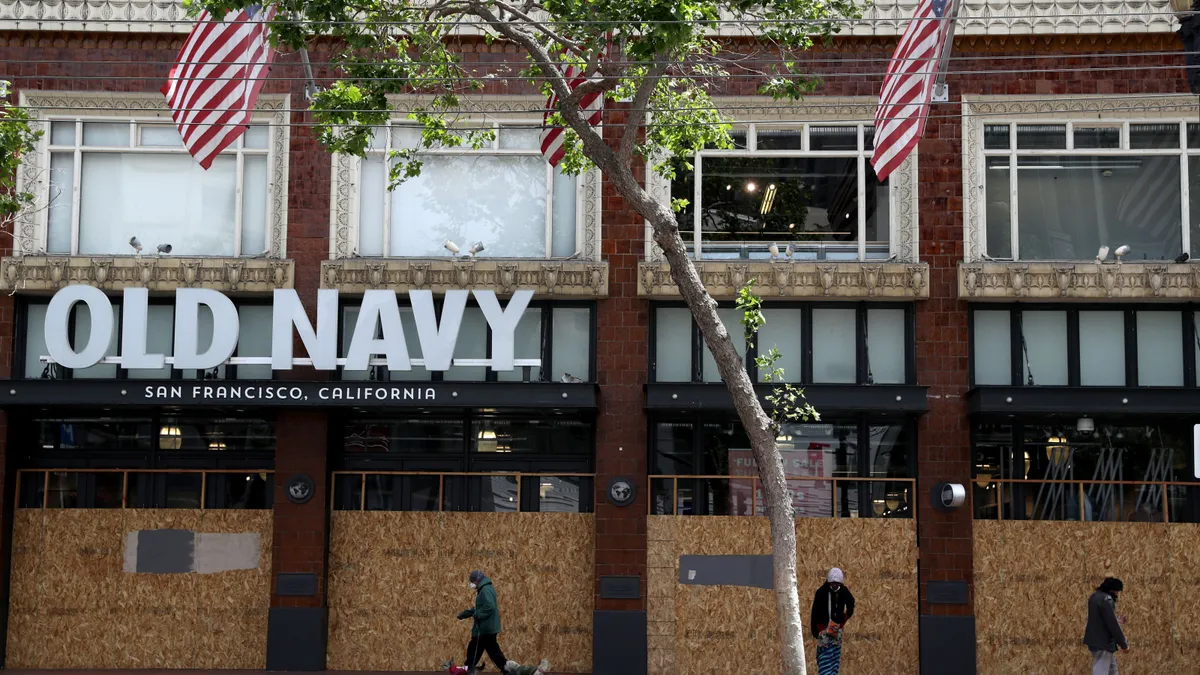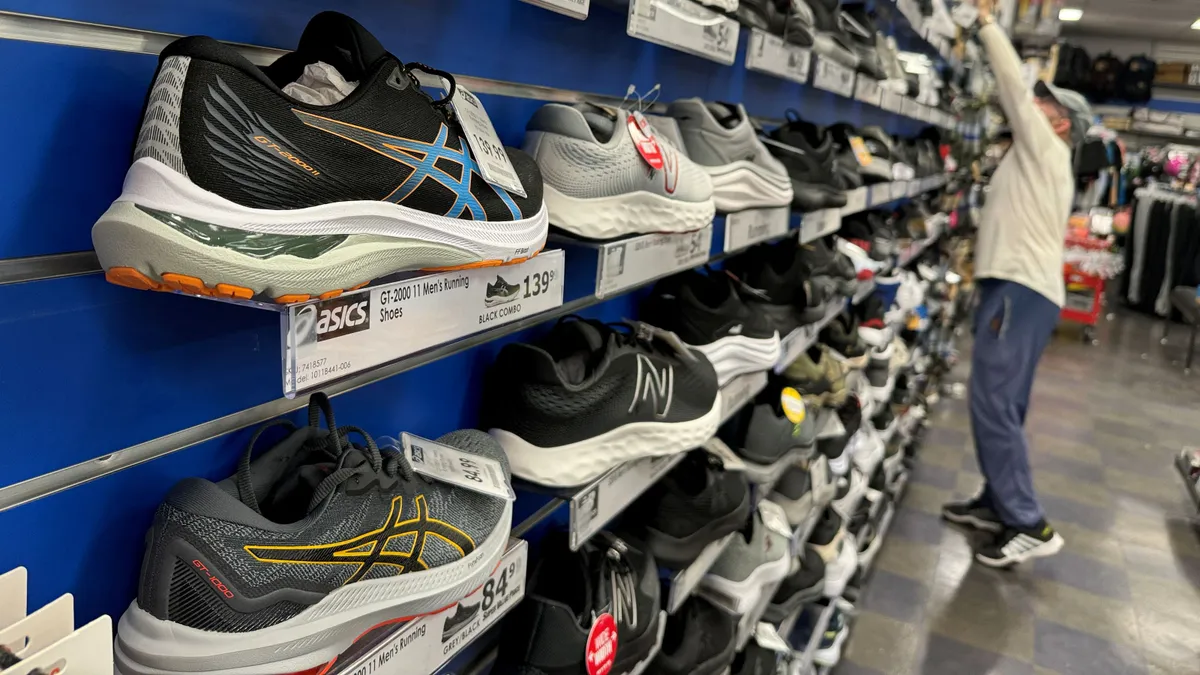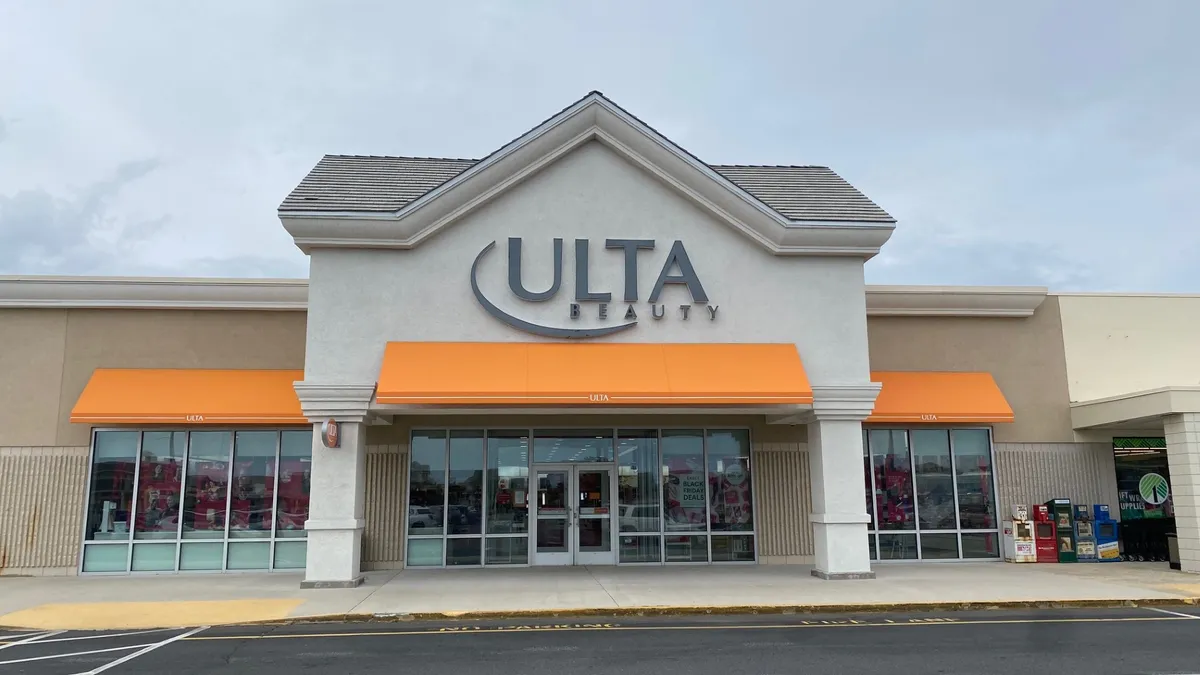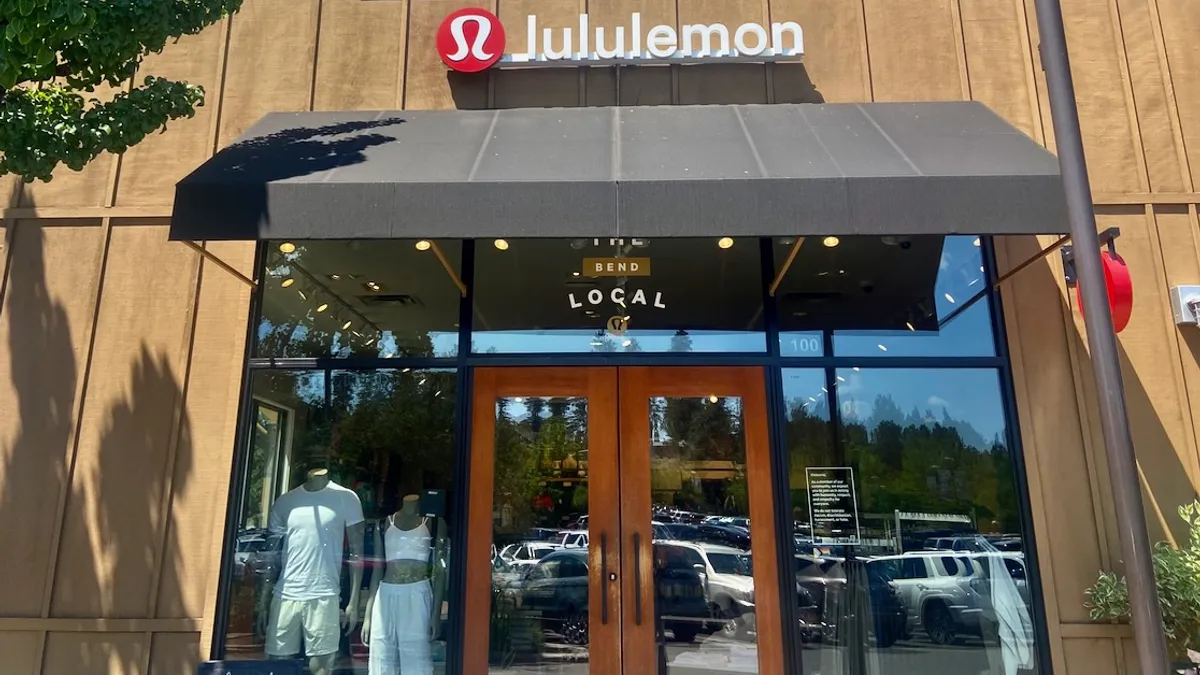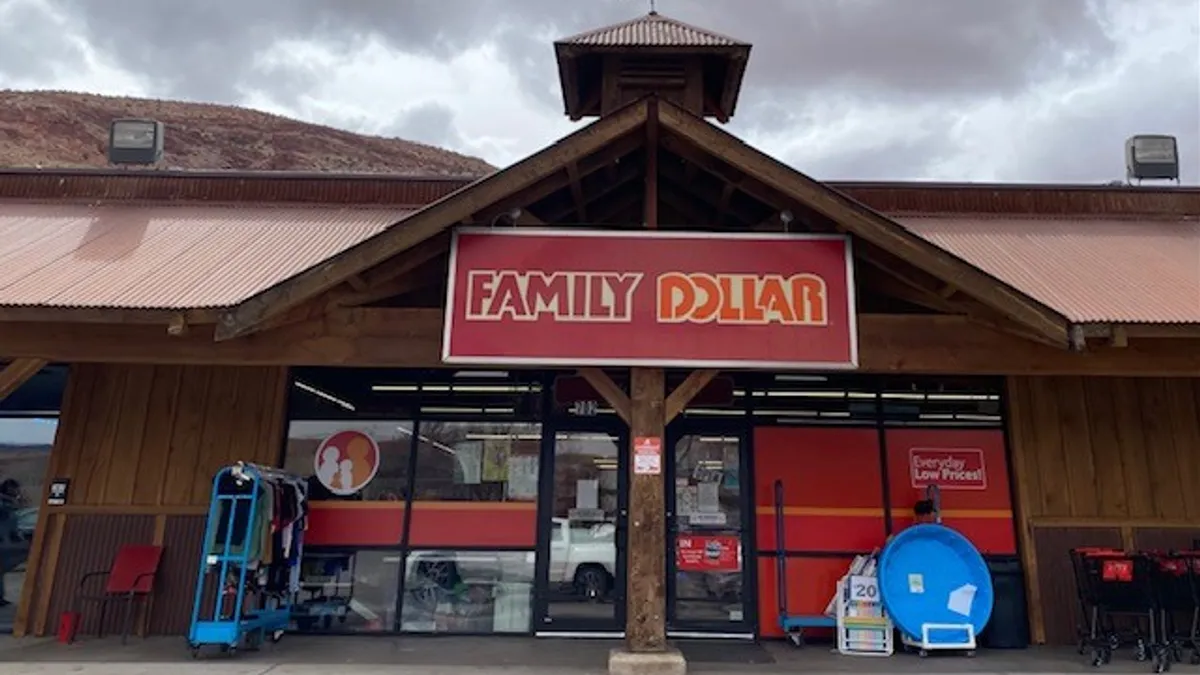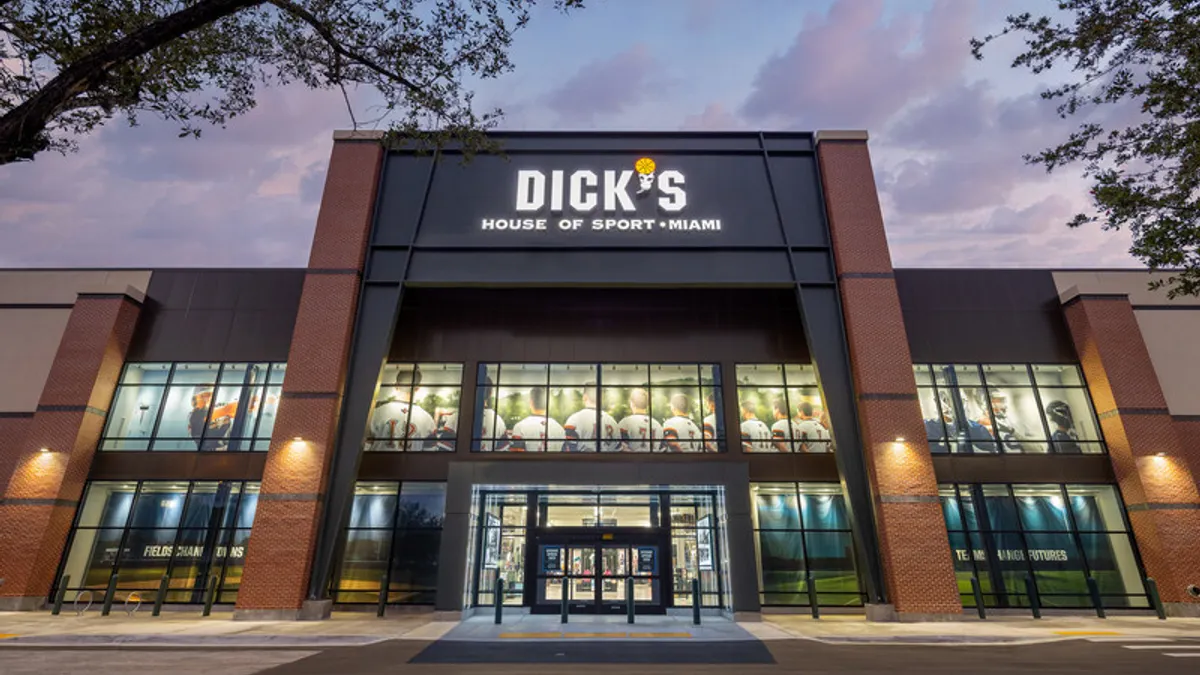This article is part of a Retail Dive project looking at Blockbuster's history and path to extinction.
Nearly a decade has passed since video rental giant Blockbuster filed for bankruptcy. Dish, which bought the company and its intellectual property, closed the last of the stores it owned more than five years ago, leaving just a handful of franchisees out in the cold.
As of this year, just one Blockbuster remains on the entire planet.
While Blockbuster is often offered up as the classic case study of technological disruption, the actual story is a bit more complicated.
After talking with former executives, franchisees and analysts over the course of months, it's also clear that the story of Blockbuster's demise is still important for retailers operating today. We've enumerated some of those lessons below, beyond just the perennial advice of: Go back in a time machine and buy Netflix if you have the chance.
1. Debt bites
Blockbuster entered bankruptcy when it did in part because it had struggled to refinance the $1 billion in debt on its books, thanks to a dividend it paid to former owner Viacom as it spun off in the early 2000s.
Former CEO Jim Keyes told Retail Dive Blockbuster may have survived had it not run up against its debt wall during a period of financial turmoil throughout the economy. Grant Jordan, a managing director with Wells Fargo today who used to cover Blockbuster as an analyst, said Blockbuster's debt load also left it with less money to invest and few options when the debt came due.
In that respect, Blockbuster's story precedes that of dozens of retailers in recent history. Stacked with debt — often, though not always, from private equity buyouts — they have less money to invest in prices, stores and technology.
That quickly becomes an existential problem in a low-margin business during a period of rapid technological transformation, secular shifts and fiery price competition, such as the period the industry is in now. Toys R Us, Gymboree, Payless ShoeSource, RadioShack — the list of stores caught between their balance sheet and a changing market is long.
2. Know your customer
Former franchisees who spoke with Retail Dive said Blockbuster had access to a wealth of valuable data on its customers but did little with it.
Customers disclosed their addresses, birth dates and, of course, voluminous details about their entertainment tastes and purchasing habits, with every rental and concession transaction logged and stored in a period before buzz about "personalization" and "big data."
Jim Porterfield, who ran one of Blockbuster's largest franchises, also says the company did not have a deep understanding of its consumer. In his view, the company needed to bring out independent firms to analyze its market, and look not just at its own customer but those who didn't shop at its stores to understand why.
"They were the first company to have demographic information that they could match up with what people wanted to watch," said Alan Payne, a former franchisee who is writing a book about the company. "They never used it."
If that wasn't bad enough, the retailer was running on DOS-based software well into the 21st century.
Ray Harrigill, a former franchisee, told Retail Dive that a few years before the bankruptcy, the company had looked into upgrading its IT system, which would have let it do more customer-specific promotions — all that modern stuff retailers do — but neither corporate nor franchisees had the $30,000 per store to make the upgrade as the business was declining. (And just ask Toys R Us how badly outdated IT can burn you. It may have contributed to the company's ultimate liquidation.)
Put simply, Blockbuster failed in part because it had not studied its customers and prospective customers closely enough. (Also, upgrade your IT system before it's too late.)
3. Know yourself
From time to time, the folks in charge of the video rental retailer would have a vision of some other thing it could be.
Viacom, which owned Blockbuster for a time starting in the mid-1990s, thought Blockbuster could be a clearinghouse for books, toys, and MTV and Paramount merchandise. It was a disaster. It helped destroy half the company's value within two years of Viacom acquiring the retailer.
Not quite two decades later, Dish thought Blockbuster stores could be used as a venue to sell Dish services. The satellite TV provider dropped the plan in short order. In between, Keyes had plans to merge Blockbuster with RadioShack, and then Circuit City, to make it a sort of Apple Store of entertainment. Those plans never got off the ground.
Even people within the company argued over the years about what it was — whether it was a retailer or something else.
The point is, retailers that do not have a strong identity can easily get lost. Target understood this when it defied Amazon-obsessed investors' logic and invested in its stores and a major refresh of its private label strategy. Best Buy is a similar case, with the electronics retailer jettisoning its mobile stores and leaning on its stores and employees' knowledge of electronics to engineer a turnaround while its peers fell to Amazon.
4. Don't punish your customers, ever — just don't ever do it
Blockbuster was addicted to late fees, which accounted for more than 15% of its revenue during the retailer's heyday. They were a punishment on their face, even when the company tried to spin them as rental renewals — meaning you could be two hours late or two days late and pay the same price — which got the company sued.
Late fees didn't just irritate — they added stress to the rental process.
Entrepreneurs like Reed Hastings of Netflix and Gregg Kaplan, who founded Redbox, didn't just capitalize on technology to chase Blockbuster's business. They introduced different pricing schemes, which proved much less off-putting than late fees. (Hastings famously traces Netflix's origins to a $40 late fee he had at Blockbuster.) By the time Blockbuster tried axing late fees and launching a Netflix-like subscription model, it was probably too late.
From return policies to shipping to pricing, retailers today are in a race to be the most customer-accommodating. But that doesn't mean they always have or always will, or that there aren't more subtle ways of nickel-and-diming customers.
5. Be a student of pricing and merchandising
Payne thinks Blockbuster screwed up majorly in the way it priced DVDs.
When the movie studios transitioned to the format, they departed from many years of strategy by making sell-through pricing affordable to all, not just video stores. Suddenly Walmart, Target and Best Buy became fierce competitors, selling movies for as low as $5 when Blockbuster was trying to rent new releases at around $4 and older movies for not much less.
At the same time, Blockbuster's own costs came down because of the pricing change. To Payne, the company would have been far better off lowering its rental prices (and with them, its margins) to stay competitive in the new landscape.
He also thinks the company was overly obsessed with new releases and should have given more space and attention to older movies on its floors. And he may have a point. Netflix built a business with a catalog that included plenty of older titles.
Today, pricing and merchandising are as complicated as they've ever been. Pricing online can require data scientists to train dynamic pricing algorithms to keep up with competitors to the instant. And yet, because of resourcing constraints and habit, many pricing managers and executives stick with the strategies that have worked for them so far.
6. Nothing is inevitable except decline
Blockbuster never had to exist. It built a business based on a certain set of conditions. When those conditions changed, it found itself in constant scramble mode and never could quite get its ducks in a row to transform.
"There's tremendous profitability in moments of retail history, and nothing lasts forever," said Nick Egelanian, founder and president of SiteWorks, of Blockbuster's rise and fall. "How many retailers are there in all of retail that have been around for more than 50 years? Retail is an unforgiving business. It can be incredibly lucrative when you're on your game. And it can be incredibly punishing when you are off your game or when the market changes delivery methods."
As modern examples, Egelanian points to the long decline of department stores as their various departments have been commodified, with products sold more cheaply and conveniently by category killers and then mass merchants. He also points to mall-based fashion sellers that rely on high-low pricing as currently being under threat.
With few exceptions, businesses rise and fall. But that's no reason to abstain.
"If I had the opportunity to do Blockbuster again, at the time that I did, I would absolutely do it again," Harrigill said. "Every business has a risk.




